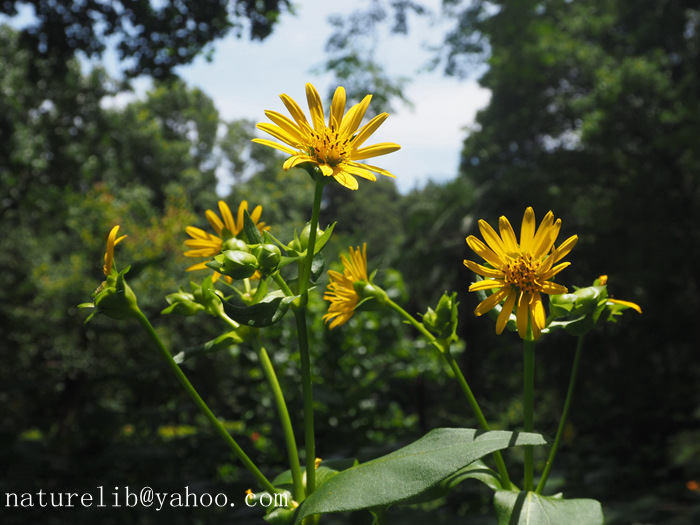串叶松香草 Silphium perfoliatum
- Scientific Name: Silphium perfoliatum L.
- Ref: Syst. Nat. ed. 10 2:1232. 1759
- Synonyms: Resinocaulon perfoliatum Lunell; Silphium conjunctum Willd.; S. erythrocaulon Bernh. ex Spreng.; S. hornemannii Schrad. ex DC.; S. petiolatum Poir.; S. quadrangulum Hedw.; S. scabrum Moench; S. tetragonum Moench
- English Common Name: cup plant, cup-plant, cupweed
- Chinese Common Name: 串叶松香草 chuànyè sōngxiāng∙cǎo
- Family: Asteraceae
- Genus: Silphium
- Distribution: native to E North America
- Photo: 06/21/2009, South China Botanical Garden, Guangdong
Plants caulescent, 75–300 cm; fibrous rooted. Stems square, glabrous, hispid, or scabrous. Leaves: basal caducous; cauline usually opposite, rarely whorled (in 3s), petiolate or sessile; blades deltate, lanceolate, or ovate, 2–41 × 0.5–24 cm, bases attenuate or truncate (distal connate-perfoliate), margins entire, dentate, or bidentate, apices acuminate to acute, faces scabrous to hispid. Phyllaries 25–37 in 2–3 series, outer appressed, apices acute to acuminate, abaxial faces scabrous or hispid. Ray florets 17–35; corollas yellow. Disc florets 85–150 (–200); corollas yellow. Cypselae 8–12 × 5–9 mm; pappi 0.5–1.5 mm. (FNA Vol. 21)

06/30/2016
